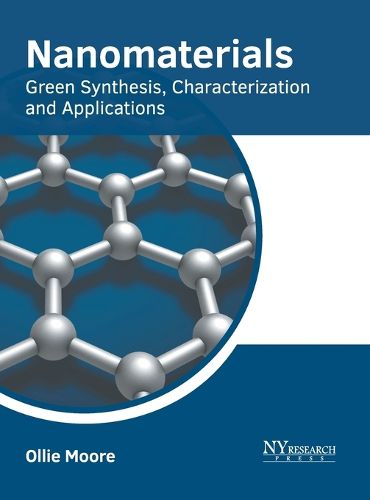Readings Newsletter
Become a Readings Member to make your shopping experience even easier.
Sign in or sign up for free!
You’re not far away from qualifying for FREE standard shipping within Australia
You’ve qualified for FREE standard shipping within Australia
The cart is loading…






The synthesis of nanoparticles can be done using biological, physical and chemical pathways. Green synthesis of nanomaterials refers to the synthesis of diverse metal nanoparticles utilizing bioactive agents. These include microorganisms, plant materials, and several biowastes such as eggshells, vegetable waste, agricultural waste, and fruit peel trash. Green synthesis of nanoparticles is aimed to reduce waste and develop sustainable techniques. It is a bottom-up strategy in which nanoparticles are synthesized by oxidation/reduction of metallic ions through organic moieties derived from biological resources. Microorganisms such as actinomycetes, fungi, algae, bacteria and yeast may be found in these biological systems. This book elucidates the concepts and innovative models around prospective developments with respect to the green synthesis of nanomaterials, their characterization and applications. It covers in detail some existent theories and innovative concepts revolving around this domain. This book is a vital tool for all researching and studying the green synthesis of nanomaterials.
$9.00 standard shipping within Australia
FREE standard shipping within Australia for orders over $100.00
Express & International shipping calculated at checkout
The synthesis of nanoparticles can be done using biological, physical and chemical pathways. Green synthesis of nanomaterials refers to the synthesis of diverse metal nanoparticles utilizing bioactive agents. These include microorganisms, plant materials, and several biowastes such as eggshells, vegetable waste, agricultural waste, and fruit peel trash. Green synthesis of nanoparticles is aimed to reduce waste and develop sustainable techniques. It is a bottom-up strategy in which nanoparticles are synthesized by oxidation/reduction of metallic ions through organic moieties derived from biological resources. Microorganisms such as actinomycetes, fungi, algae, bacteria and yeast may be found in these biological systems. This book elucidates the concepts and innovative models around prospective developments with respect to the green synthesis of nanomaterials, their characterization and applications. It covers in detail some existent theories and innovative concepts revolving around this domain. This book is a vital tool for all researching and studying the green synthesis of nanomaterials.